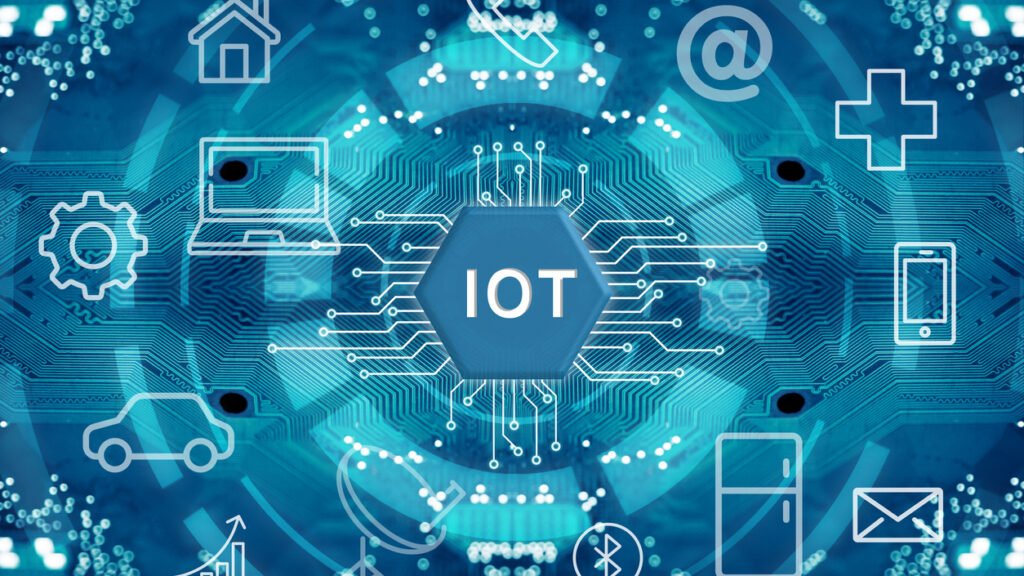
IoT, or the Internet of Things, is essentially about connectivity: how devices maintain IoT connections with each other and with all other points in the IoT ecosystem like routers, gateways, servers, and the cloud. No matter how advanced an IoT device is, it won’t bring any value to the IoT network if it can’t connect properly to the internet.
With that being said, there are a wide variety of connectivity solutions available to facilitate IoT connection. IoT projects, as we know, vary greatly in many ways, and each will have different requirements in their connectivity options.
Here, we will discuss the different options of IoT connection available to help you inform your decisions for your project.
Why Do You Need To Choose The Right IoT Connection?
The short answer is that whether you are using the right type of IoT connection can make or break your IoT project’s success.
Different IoT connectivity options will dictate the cost-efficiency and reliability of your IoT project. For example, if your IoT deployment doesn’t actually need to send and receive a lot of data, then you might not need to use an IoT connection with high bandwidth capabilities (like Wi-Fi) so you should be able to save costs.
On the other hand, if your IoT project spans across a wide area and IoT sensors are separated far away from each other, then you’ll need to choose an IoT connectivity solution that can accommodate this need of range.
Thus, we can’t simply choose popular IoT connection solutions like Wi-Fi or cellular IoT, or Bluetooth and get along with them: each project is unique, so you’ll need to first figure out your project’s needs and requirements before committing to a connectivity solution.
With that being said, paying careful attention to the right choice of IoT connection is very important to any IoT project’s success, especially regarding reliability and cost-efficiency.
Why So Many IoT Connection Options?
At the moment there are more than 100 network protocols capable of performing IoT connections, around 30 of them are fairly popular.
The question is, why so many? If only there’s a standardized IoT connection technology we can all use, wouldn’t it be so much more convenient?
The answer is simple: at the moment, we don’t (yet) have a technology capable of catering to all kinds of IoT projects with all the different requirements.
A perfectly ideal IoT connection technology should fulfill three key requirements:
- Consumes as close to zero energy as possible
- Has a near unlimited range of connectivity. In theory, should be able to connect two devices separated halfway across the world
- Can send a near unlimited amount of data at any given time (unlimited bandwidth)
As we can see, such connection technology doesn’t yet exist at the moment, but IoT connection always revolves around those three technical requirements: energy consumption, coverage range, and bandwidth.
With that being said, all IoT connection options we have at the moment always feature at least one tradeoff between those three requirements. This is why we have so many different IoT connection options available: which tradeoff are we willing to make?
Popular IoT Connection Technologies To Consider
As discussed, finding the best IoT connectivity solution is about negotiating which tradeoff you are willing to make between the three IoT connection requirements: range, bandwidth, and energy consumption.
Thus, among the so many different IoT connection solutions available, we can differentiate them into three major categories:
- High energy consumption, High bandwidth, High Range (tradeoff in energy consumption)
- Low energy consumption, High bandwidth, Low range (tradeoff in range)
- Low energy consumption, Low bandwidth, High range (tradeoff in bandwidth)
When discussing the popular IoT connection technologies below, pay attention to which category they belong to:
- Wi-Fi
Type: Low energy consumption, High bandwidth, Low range (tradeoff in range)
Wi-Fi is considered a pretty energy-efficient IoT connection solution when compared to technologies like cellular connectivity and can offer high bandwidth capabilities. The tradeoff? Wi-Fi can only cover a fairly limited range.
Thus, Wi-Fi is ideal for IoT projects where the devices need high data transfer rate but are not separated too far from each other like smart homes, hospitals, offices, and so on.
- Cellular IoT
Type: High energy consumption, High bandwidth, High Range (tradeoff in energy consumption)
Cellular IoT is one of the most popular IoT connection options available, mainly due to two things:
- Most of us are familiar with cellular connectivity (thanks to our smartphones), and the technology is pretty reliable
- Wide availability anywhere in the world. By partnering with the right IoT network provider that offers global coverage, it’s possible to achieve global IoT connectivity with cellular.
In fact, cellular IoT is one of only two connection solutions capable of global coverage, the other one being a satellite. However, satellite connectivity is much more expensive than cellular.
- Bluetooth LE
Type: Low energy consumption, High bandwidth, Low range (tradeoff in range)
Bluetooth LE (Low Energy) is similar to Wi-Fi in many different ways. However, Bluetooth LE consumes less power than Wi-Fi, but at the same time also has lower bandwidth.
Bluetooth LE is easy to set up and has very low possibilities for signal interference, making it a great choice for various indoor IoT implementations.
- LPWAN
Type: Low energy consumption, Low bandwidth, High range (tradeoff in bandwidth)
Low-Power Wide-Area Network, or LPWAN, is the umbrella term used to refer to various newer technologies that can send data reliably across a long-range while maintaining low energy consumption.
LoRa and SigFox are popular examples of LPWANs, along with modified cellular technologies like NB-IoT (Narrowband IoT) and LTE Cat-M.
The tradeoff here is the (very) low bandwidth capabilities, but there are actually many IoT use cases that don’t really require a lot of bandwidth. Sensors, for example, might only need to send a small amount of data with every measurement.
Conclusion
Choosing between different IoT connection options is essentially about knowing your IoT project’s needs, and negotiating the balance between range, bandwidth, and energy consumption. Understanding your project’s requirements will significantly help in choosing the best connectivity solution to ensure the cost-efficiency and reliability of your project.








